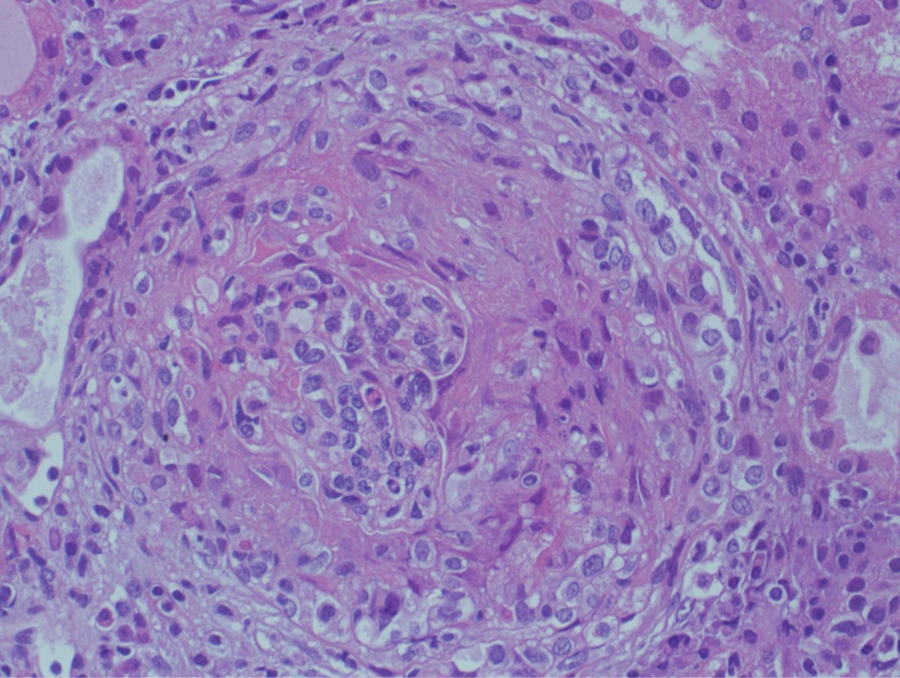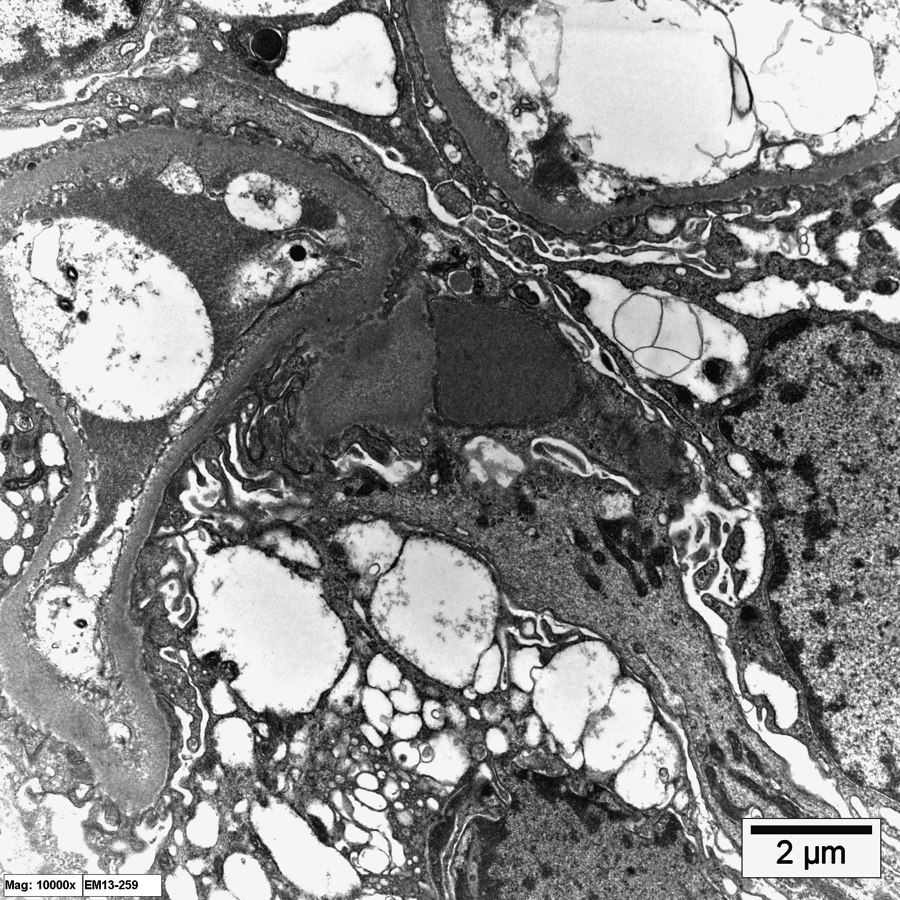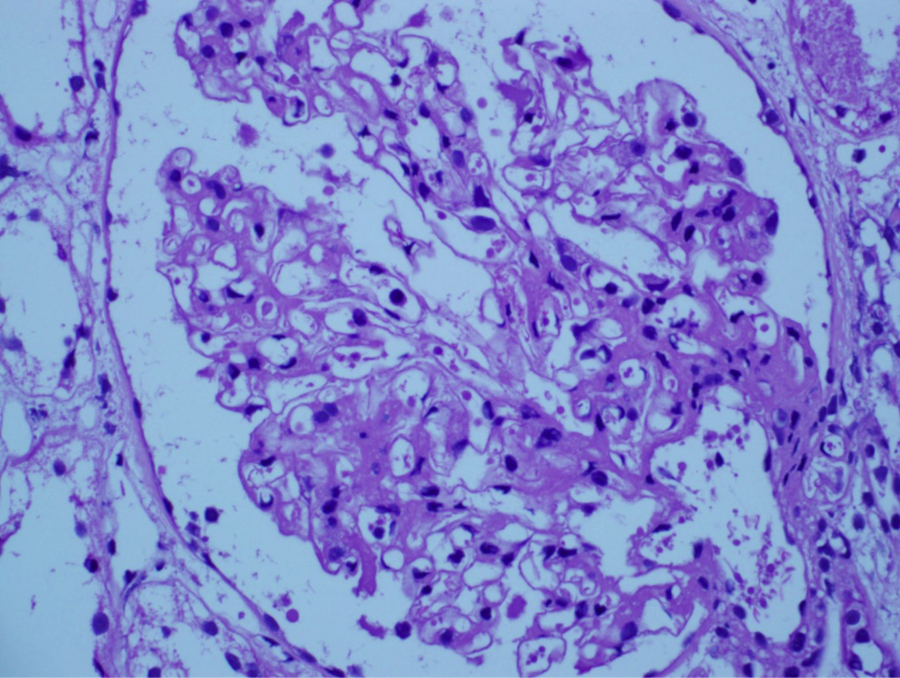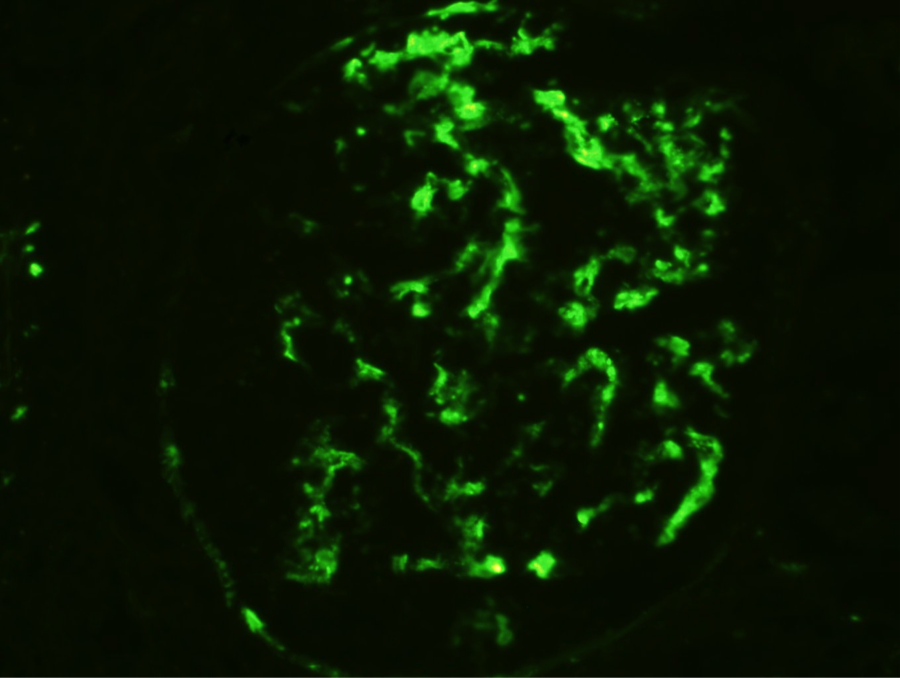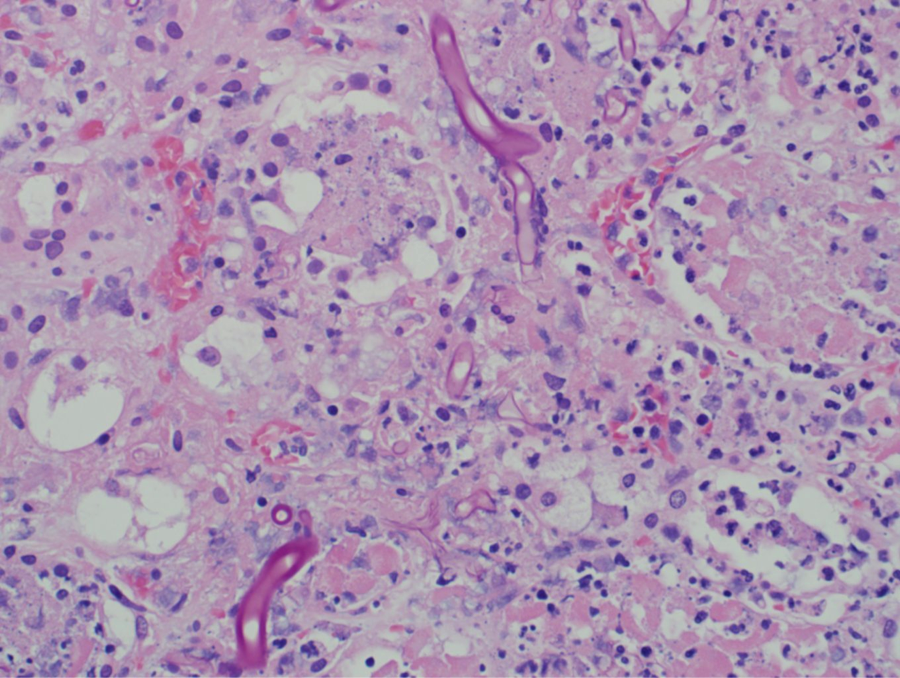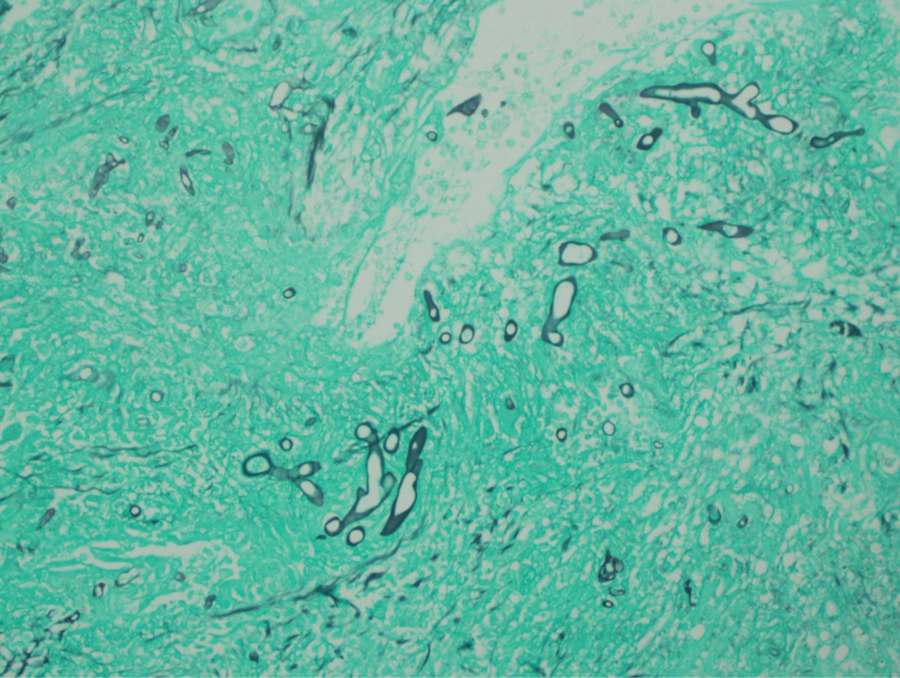
Hala Kfoury
Hala Kfoury Kassouf is Associate Professor of Pathology at the King Saud University Hospital in Saudi Arabia.
Case #17: S13-2744. Acute post-infectious glomerulonephritis.
Introduction
Introduction
Eight year old boy presented with lower limb edema, HTN, hematuria and proteinuria : 2.5g/day (normal :0.01-0.15g/day). A renal biopsy is performed.
Discussion
Discussion Case 17
Question #1and 2: The first photomicrograph highlights the presence of extracapillary proliferation and in the center of the glomerulus, the compressed tuft is seen. By definition, the presence of this proliferation in more than 50% of the glomeruli qualify for a diagnosis of crescentic glomerulonephritis. Crescentic glomerulonephritis secondary to post-infectious glomerulonephritis is well documented and the presence in the second photomicrograph of a subepithelial hump support the diagnosis.
Case #16: H11-2873. C3 Glomerulonephritis.
Introduction
Introduction
A 30 year old female with hypertension for 9 years, presented with gross hematuria for one month and is found to have proteinuria of 3.25g/day(normal 0.01-0.15g/day) and a serum creatinine of 141µmol/L (normal 53-106) . A renal biopsy is performed.
Discussion
Discussion Case 16
Question #1: The photomicrograph highlights the mesangial proliferation noted in the glomerulus. Different pattern of injury have been described in patients with C3 glomerulonephritis including mesangial proliferation.
Question #2: The diagnosis of C3 glomerulopathy is supported by the presence of strong mesangial and to a lesser degree capillary staining for C3 on the immunofluorescence studies with negative immunoglobulins. The electron microscopy study shows mainly subendothelial non-organized dense deposits. Studies regarding C3 glomerulonephritis showed a EG CD46 mutation.
Case #15: H13-6814: Acute tubulo-interstitial nephritis (Sjogren Syndrome)
Introduction
Introduction
39 years old female patient with history of dryness of the mouth and eyes, presented with increased serum creatinine :135µmol/L (normal 53-106). Her urine analysis shows 1+ proteinuria, WBC 3/hpf, RBC 20/hpf. A renal biopsy is performed.

Discussion
Discussion Case 15
Question#1 and 2: Patients with Sjogren syndrome may show renal manifestations depending on the renal component affected : glomerular, tubulo-interstitial or vascular. In this patient, the interstitium shows infiltration by lymphocytes and plasma as has been described typically in patients with Sjogren syndrome. The lymphocytes and plasma cells are also noted in the minor salivary glands among other sites , and the biopsy of the oral mucosa is a major diagnostic procedure to support the diagnosis of Sjogren syndrome.
Question #2: The GMS stain is known as one of the two stains of choice for fungal organisms, the other is the PASD stain. The septae of the hyphae react with the silver component of the GMS stain to give the characteristic black color noted in the photomicrograph.
Case #14: H11-4326 Renal Dysplasia.
Introduction
Introduction
8 year old male with left non-functioning kidney. A unilateral nephrectomy is performed.
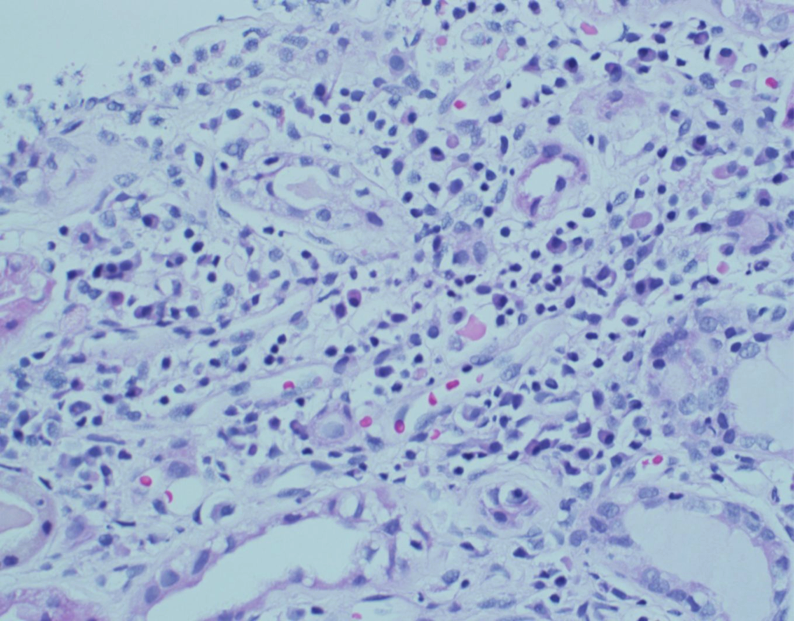
Discussion
Discussion Case 14
Questions #1 and 2: The photomicrograph showed the features consistent with renal dysplasia with dilated calyx, primitive ducts surrounded by smooth muscle fibers. Glomeruli were difficult to identify. Renal dysplasia may be segmental or may involve one or both kidneys. Renal dysplasia is considered as a developmental defect rather than a variant of a cystic kidney disease or an infectious process or a neoplasm. A loss of local gene transcription has been considered.
Case #13: H13-5186 Renal infarction post-kidney transplantation with fungal infection.
Introduction
Introduction
28 years old male patient received a living unrelated renal transplantation, a month prior to nephrectomy (done for non function).
Discussion
Discussion Case 13
Question #1: The photomicrograph shows in the background, necrosis of the different elements present of the renal tissue ( glomeruli, tubules and interstitium), with extensive infiltration by polymorphonuclear cells. Also noted is a number of branching non-septated fungal hyphae. Patients with kidney transplantation are immunocompromised and the poor irrigation of the allograft as in this case leads to an opportunistic infection represented by the fungal organisms noted in the photomicrograph.
Question #2: The GMS stain is known as one of the two stains of choice for fungal organisms, the other is the PASD stain. The septae of the hyphae react with the silver component of the GMS stain to give the characteristic black color noted in the photomicrograph.
A 54 year old male presents with massive proteinuria and is found to have renal impairment(serum creatinine 2.5mg/dl). A renal biopsy is performed.
A 31 year old female who had kidney transplant 7 year ago for ESRD of unknown origin from LNRD presents with increased serum creatinine of 1.59mg/dl. A renal biopsy is performed.
A 46-year-old male patient with hypertension and diabetes mellitus is found to have proteinuria of 1.6g/24h. A renal biopsy is performed.
A 21-years-old female patient with small joint pain, fever, hair loss, proteinuria (2.1g/24h), hematuria, normal renal function, low C3. A renal biopsy is performed.
25-year-old female patient, a known case of SLE for 7 years, ANA positive, dsDNA positive, anticardiolipin (positive) 24h urine collection: with 1.6 g protein. A renal biopsy is performed.

